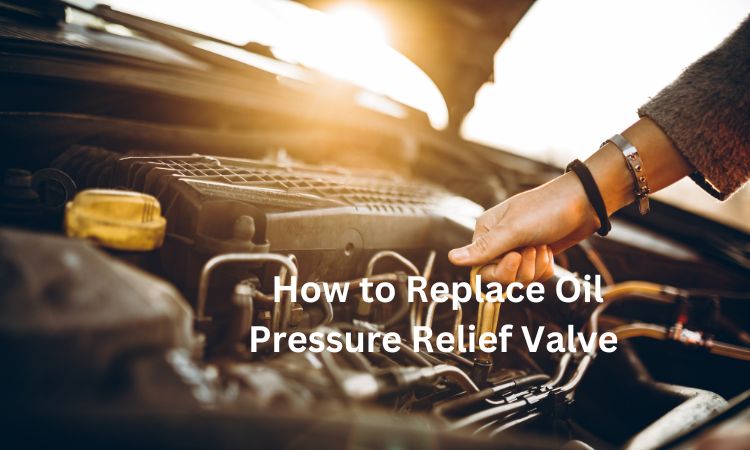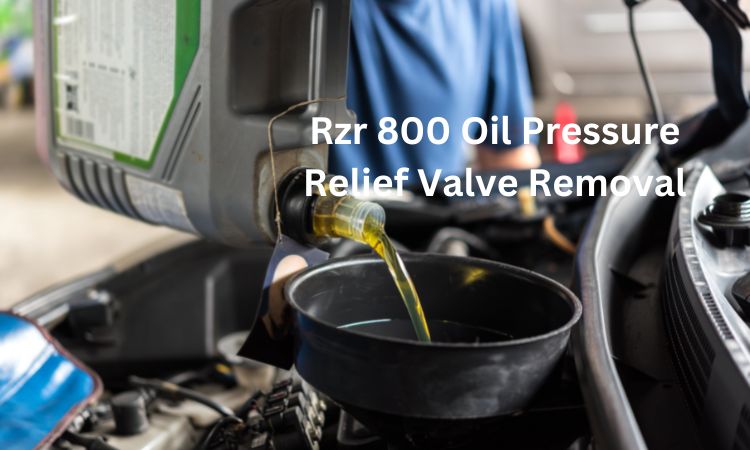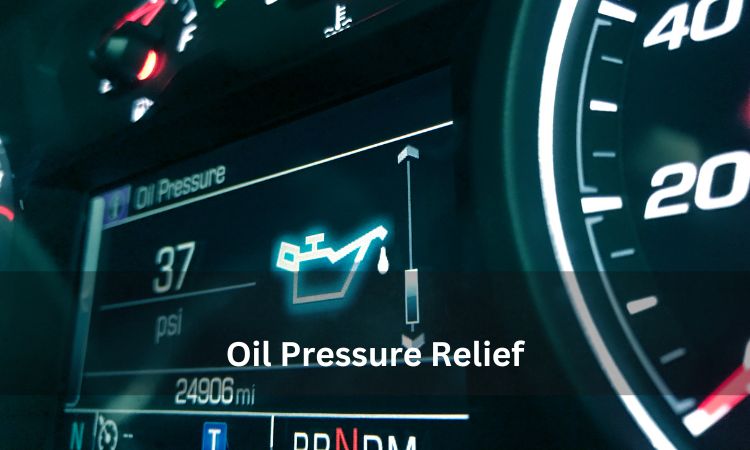How to Unstick Oil Pressure Relief Valve
If your oil pressure relief valve is stuck, it can cause some serious problems for your engine. The good news is that there are some things you can do to try and fix the problem. First, you will need to identify the source of the problem.
If the problem is with the valve itself, you may be able to clean it or replace it. If the problem is with the oil pump, you will need to have it repaired or replaced. Once you have identified the source of the problem, you can take steps to fix it.
- Remove the oil cap and pressure relief valve cover
- Use a small pick or other sharp tools to gently pry the spring retainer off the valve stem
- Remove the spring and disc from the valve body
- Clean any debris from the valve body and components with a clean cloth or brush
- Reassemble the pressure relief valve, being sure to lubricate the O-ring on the spring retainer with petroleum jelly before replacing it on the valve stem
Oil Pressure Regulator
What Would Happen If the Oil Pressure Relief Valve Got Stuck Open?
If the oil pressure relief valve gets stuck open, it can cause a number of problems. Most importantly, it can lead to engine damage as too much oil is allowed to flow into the engine. This can cause the engine to overheat and seize up.
Additionally, if there is too much oil in the engine, it can cause a hydraulic lock, which is when the pistons become unable to move due to the high amount of pressure in the cylinders.
How Do You Clean an Oil Pressure Relief Valve?
Assuming you are talking about an oil pressure relief valve in an engine:
The oil pressure relief valve is responsible for maintaining the correct amount of oil pressure in the engine. It is located between the oil pump and the engine, and consists of a spring-loaded plunger that opens and closes to regulate the flow of oil.
If the valve becomes dirty or clogged, it can cause problems with the engine’s oil pressure. To clean the valve, you will need to remove it from the engine and disassemble it. Clean all of the parts with solvent and a brush, being careful not to damage any of the delicate parts.
Reassemble the valve and reinstall it in the engine.
How Do You Remove a Stuck Pressure Relief Valve?
If your pressure relief valve is stuck, there are a few things you can do to try and remove it. First, you can try using a pair of pliers to grip the valve and turn it counterclockwise. If this doesn’t work, you can try heating up the valve with a blow torch.
Be careful not to overheat the valve, as this could damage it. Finally, if all else fails, you may need to replace the pressure relief valve.
Can You Reset a Pressure Relief Valve?
Pressure relief valves are an important safety feature on many types of equipment, including boilers and pressure vessels. They are designed to open and release excess pressure if the system becomes too pressurized, helping to prevent dangerous situations. While pressure relief valves can be reset after they have been triggered, it is important to understand why they opened in the first place before doing so.
Otherwise, the valve may continue to trip and cause problems.
Symptoms of Stuck Oil Pressure Relief Valve
If your oil pressure relief valve is stuck, it can cause a number of problems for your engine. The most common symptom is an engine that won’t start. Other symptoms can include:
– An engine that runs roughly
– A loss of power while driving
– Smoke coming from under the hood
– Oil leaks
If you’re experiencing any of these symptoms, it’s important to get your car checked out by a mechanic as soon as possible. A stuck oil pressure relief valve can lead to serious engine damage if left untreated.
How to Replace Oil Pressure Relief Valve

If your car’s oil pressure relief valve is defective, it can cause a decrease in oil pressure and potentially damage the engine. Fortunately, replacing the oil pressure relief valve is a relatively easy task that you can do yourself with just a few tools.
To replace the oil pressure relief valve, you’ll need:
-An oil catch pan
-A ratchet and socket set
-A new oil pressure relief valve (you can get this at your local auto parts store)
-A funnel (optional)
Here’s how to do it:
1. Start by draining the oil from your car into an oil catch pan.
This will help make things less messy when you remove the old valve.
2. Once the oil has drained, use your ratchet and socket set to remove the two bolts that hold the old valve in place.
3. Carefully remove the old valve and discard it.
4. Install the new valve in its place, using your ratchet and socket set to tighten down the bolts until they’re snug.
5. Finally, add fresh oil to your car as needed through the funnel (if using).
Oil Pressure Relief Valve Diagram
An oil pressure relief valve is a device used to regulate the pressure in an oil system. The valve is usually located at the point where the oil enters the system, and it is controlled by a spring or other mechanism. When the pressure in the system rises to a certain level, the valve opens and allows some of the oil to escape, thus relieving the pressure.
The diagram below shows a typical oil pressure relief valve:
As you can see from the diagram, there are two main parts to an oil pressure relief valve: the body and the seat. The body is usually made of brass or another strong material, and it contains an internal chamber that houses the spring (or other mechanism) that controls the opening and closing of the valve.
The seat is typically made of steel or another durable material, and it forms a seal with the body of the valve when closed.
Oil pressure relief valves are designed to open at a specific pressure; this is known as their “set point.” The set point for most valves is between 50-70 psi (pounds per square inch), but it can vary depending on the application.
Once opened, these valves will remain open until either manually reset or untilthe system has cooled down and relieved enough pressure so that they can close again on their own.
Chevy 350 Oil Pressure Relief Valve Location
The Chevy 350 oil pressure relief valve is located on the side of the engine, near the oil filter. The purpose of this valve is to release pressure from the engine when it gets too high. If the pressure gets too high, it can cause damage to the engine.
This valve is important because it helps to keep the engine running smoothly and prevents damage.
5.3 Oil Pressure Relief Valve Delete
If you have an oil pressure relief valve (OPRV) delete kit, it’s important to know how to install it correctly. Here are some tips:
1. Make sure the OPRV delete kit includes all of the necessary parts.
If any parts are missing, do not attempt to install the kit.
2. Locate the OPRV on your engine. It is typically located near the oil filter housing.
3. Remove the old OPRV by unscrewing it from its mounting location. Be careful not to damage any surrounding components when removing the old OPRV.
4. Install the new OPRV in the same location as the old one was mounted.
Again, be careful not to damage any surrounding components when installing the new OPRv . Use thread sealant onthe new OPRv threads for a proper seal .5 Finally, screw in and hand-tighten The new o-ring that comes with most kits..6 until snug before torqueing to 20 ft/lbs with a 3/8″ drive ratchet .
Polaris 800 Oil Pressure Relief Valve Stuck
If you own a Polaris 800, you may have experienced the oil pressure relief valve getting stuck. This can be a major problem because it can cause your engine to overheat and seize up. The good news is that this is an easy fix that you can do yourself.
The first thing you need to do is locate the oil pressure relief valve. It is located on the left side of the engine, just behind the oil filter. Once you have found it, use a pair of pliers to remove the spring clip that holds it in place.
Next, take a small flathead screwdriver and gently pry the valve out of its seat. Be careful not to damage the seat as you do this. Once the valve is out, inspect it for any debris or damage.
If everything looks good, simply reverse the process and put everything back together.
If your oil pressure relief valve is damaged or excessively dirty, it will need to be replaced. Fortunately, this is a relatively inexpensive part and easy to find at most auto parts stores.
Rzr 800 Oil Pressure Relief Valve Removal

If you have a Rzr 800, then you know how important it is to keep the oil pressure relief valve in good working order. If this valve fails, then it can cause extensive damage to your engine. Today, we’re going to show you how to remove the oil pressure relief valve from your Rzr 800.
First, start by disconnecting the negative battery cable. Next, remove the oil filter and drain the oil from the engine. Once the oil has been drained, remove the oil pressure relief valve cover.
There are four bolts that hold this cover in place – two at the top and two at the bottom.
Remove these bolts and carefully lift off the cover. Inside, you’ll see the spring-loaded oil pressure relief valve.
Using a pair of pliers, gently compress this valve and pull it out of its housing.
With the old valve out, simply insert a new one in its place and reassemble everything according to factory specifications. Be sure to properly dispose of any used motor oil – don’t pour it down the drain!
That’s all there is to removing and replacing the oil pressure relief valve on your Rzr 800. By following these simple steps, you can be sure that your engine will stay protected against excessive wear and tear.
Polaris Oil Pressure Relief Valve
The Polaris oil pressure relief valve is a small, but important, component in your vehicle’s engine. This valve helps to regulate the amount of oil that flows through the engine, and prevents too much oil from flowing into the cylinders. Without this valve, your engine could be damaged by too much oil pressure.
The Polaris oil pressure relief valve is located on the side of the engine block, near the oil filter. It is a small metal valve that is opened and closed by a spring-loaded plunger. When the engine is running, the plunger is pushed open by the high oil pressure, allowing oil to flow through the valve and into the engine.
When the engine is off, or when there is no longer enough pressure to push open the plunger, the spring closes the valve, preventing any oil from leaking out.
If your vehicle has been experiencing problems with low oil pressure, it may be due to a faulty Polaris oil pressure relief valve. In some cases, these valves can become stuck in either the open or closed position.
This can cause serious damage to your engine if not fixed promptly. If you think you may have a problem with your Polaris oil pressure relief valve, take your vehicle to a qualified mechanic for diagnosis and repair.
Conclusion
If your oil pressure relief valve is stuck, don’t despair! There are a few things you can do to try and unstick it. First, try using a pair of pliers to gently turn the valve.
If that doesn’t work, you can try heating up the area around the valve with a hair dryer or heat gun. Finally, if all else fails, you may need to replace the valve entirely.

